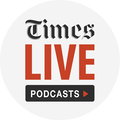
Canadian prime minister shows true colours
Loading player...
It’s safe to say Justin Trudeau has arrived as a Canadian prime minister. The callow scion deemed “just not ready” by the Conservatives in 2015, and who promised to do politics differently, has officially completed his transformation into a leader who is ruthless, cynical and disdainful of parliament.
He coldly dispatches capable senior ministers who challenge him on valid issues, the most recent being Bill Morneau, the finance minister who did his job by expressing concern about the federal government’s huge Covid-19 relief spending.
When Trudeau is not proroguing parliament, he is sidelining it. It was a Liberal Party motion that adjourned parliament in March and reduced it to a mere spectator during the Covid crisis.
The new session starts on September 23 with a speech in which Trudeau will outline his government’s comprehensive plan for the postpandemic recovery, after which the house will hold a confidence vote. If the Liberals and their plan survive the vote, they will in effect have been granted a mandate to enact major reforms, without the usual inconvenience of an election.
We don’t know what the recovery plan will contain, but Trudeau outlined the broad strokes on Tuesday. Mostly, it will involve borrowing a lot more money. He implied that he intends to invest new money in health care, in emergency preparedness and in making the country “more fair.” He spoke of “bold new solutions”.
He made it clear when asked by a reporter that his government will not be raising taxes as it spends money “to build a Canada that is more resilient, a Canada that is healthier and safer, greener and more competitive”. Which means the new spending will be financed largely by debt.
No-one is damning the Liberals for running up a C$343bn deficit as they responded to the Covid-19 crisis. But reasonable voters can disagree about whether the borrowing should continue into 2021 to help spur the recovery. It is also legitimate to ask whether Trudeau has the mandate to continue to run unprecedented deficits after the pandemic emergency has passed, but he is avoiding that question. /Ottawa, August 20
Globe & Mail
He coldly dispatches capable senior ministers who challenge him on valid issues, the most recent being Bill Morneau, the finance minister who did his job by expressing concern about the federal government’s huge Covid-19 relief spending.
When Trudeau is not proroguing parliament, he is sidelining it. It was a Liberal Party motion that adjourned parliament in March and reduced it to a mere spectator during the Covid crisis.
The new session starts on September 23 with a speech in which Trudeau will outline his government’s comprehensive plan for the postpandemic recovery, after which the house will hold a confidence vote. If the Liberals and their plan survive the vote, they will in effect have been granted a mandate to enact major reforms, without the usual inconvenience of an election.
We don’t know what the recovery plan will contain, but Trudeau outlined the broad strokes on Tuesday. Mostly, it will involve borrowing a lot more money. He implied that he intends to invest new money in health care, in emergency preparedness and in making the country “more fair.” He spoke of “bold new solutions”.
He made it clear when asked by a reporter that his government will not be raising taxes as it spends money “to build a Canada that is more resilient, a Canada that is healthier and safer, greener and more competitive”. Which means the new spending will be financed largely by debt.
No-one is damning the Liberals for running up a C$343bn deficit as they responded to the Covid-19 crisis. But reasonable voters can disagree about whether the borrowing should continue into 2021 to help spur the recovery. It is also legitimate to ask whether Trudeau has the mandate to continue to run unprecedented deficits after the pandemic emergency has passed, but he is avoiding that question. /Ottawa, August 20
Globe & Mail

